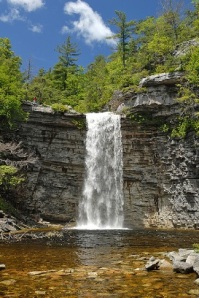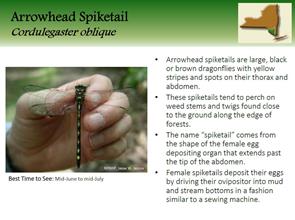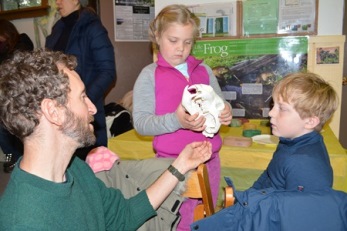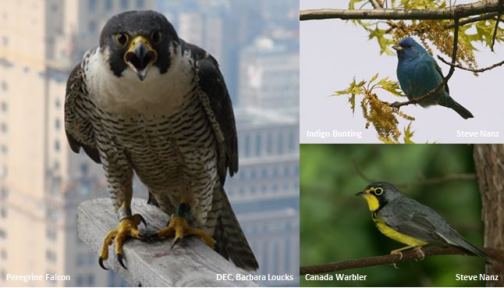Minnewaska State Park Preserve

Live Minnewaska Weather
For current weather conditions at the Lake Minnewaska Visitor Center, please see the following link.
For further information, please visit : https://www.weatherlink.com/embeddablePage/show/7384adda9ba24b129128fac421a5a0ac/fullscreen
Lake Awosting Carriage Road Closed for Restoration
Lake Awosting Carriage Road will be closed for the 2025 season to all users. Access will be provided to Lake Awosting Beach during swim season but not beyond. Please adhere to all posted trail closures and view the attached document for additional details. Thank you for your cooperation.
For further information, please visit : https://parks.ny.gov/documents/parks/MinnewaskaLakeAwostingCarriageRoadProjectTrailClosures.pdf
5281 Route 44-55
Kerhonkson, NY 12446
- General Information: (845) 255-0752

Located in Ulster County, NY Minnewaska State Park Preserve is situated on the dramatic Shawangunk Mountain ridge, which rises more than 2,000 feet above sea level and is surrounded by rugged, rocky terrain. The park features numerous waterfalls, three crystalline sky lakes, dense hardwood forests, incising sheer cliffs and ledges opening to beautiful views, clear streams cut into valleys, 35 miles of carriage roads and 50 miles of footpaths on which to bike, walk, hike and simply enjoy. And, all this within an hour and a half drive from New York City.
Visitors can also enjoy hiking, biking, swimming, picnicking, scuba-diving, rock-climbing, bouldering, boating and marveling at the scenery. Snowshoeing and cross-country ski trails are available in the Winter Season. Technical Rock Climbing permitted April through December weather permitting.
Minnewaska State Park Preserve: Sam's Point Area: Sam's Point Preserve is located on the highest section of the Shawangunk Mountains, is the most southerly section of Minnewaska State Park Preserve. To further explore Sam's Point, visit their calendar of events.
The Samuel F. Pryor III Shawangunk Gateway Campground provides a high quality, minimalist camping experience for visitors to the breathtaking Shawangunk Mountains. The tent-only campground includes a pavilion and cooking area, bathhouse and restroom facilities, and circulation trails. There are 24 drive-in spots (one vehicle per site) and 26 walk-in spots. All sites accommodate up to two tents (and four people) per pad. Recreational vehicles are not permitted. Camping is open mid-May through mid-November, weather permitting.
The campground, managed cooperatively by the American Alpine Club and Mohonk Preserve, is located at 953 State Route 299 Gardiner, NY 12525, within a five minute drive of the main entrances of Minnewaska State Park Preserve. Campground office hours are 8 a.m. to 8 p.m. Sunday through Thursday; and 8 a.m. to 10 p.m. Friday and Saturday. For additional information, please contact the campground at: 303-951-4571, or visit the American Alpine Club lodging page at http://lodging.americanalpineclub.org/ and click on the Sam F. Pryor III Campground.
For more information and to register for programs, please call the Lake Minnewaska Visitor Center at 845-255-0752. The Park Preserve opens daily at 9:00 AM and closing times vary throughout the year. The fee for parking at Minnewaska is $10 per car. There are no additional fees for public programs, unless noted otherwise. Minnewaska State Park Preserve consists of more than 24,000 acres of wild and scenic land located on Route 44/55, five miles west of the intersection with Route 299 in Gardiner, New York.
Water Quality - Beach Results
Pet Policy: Dogs only, must be on a leash not more than 6 feet. Not allowed in buildings, camping, picnic or bathing areas or on walkways. PLEASE NOTE: Pets are NOT permitted on cross-country ski trails when they are groomed and open for cross-country skiing only. Please clean up after your dog and dispose of properly.
P.O. Box 893 New Paltz, NY 12561
Hours of Operation
Park Preserve hours: The current operating hours are 9:00 AM to 9:00 PM.
- Swimming Beach Hours at Lake Minnewaska and Lake Awosting:The beaches are open for the 2025 season until Monday, September 1st.Lake Minnewaska: 11:15 am – 6:45 pmLake Awosting: 11:00 am – 5:30 pm
Fees & Rates
Most New York State Parks charge a vehicle use fee to enter the facility. Fees vary by location and season. A list of entry fees and other park use fees is available below. For fees not listed or to verify information, please contact the park directly.
The easy-to-use Empire Pass card is $80 and your key to all-season enjoyment with unlimited day-use entry at most facilities operated by State Parks and the State Dept. of Environmental Conservation including forests, beaches, trails and more. Purchase online or contact your favorite park for more information. Learn more about our Admission Programs including the Empire Pass.
- Vehicle Entry Fee
$10 per vehicle (under 15-person capacity). Any groups larger than 25 people must contact the Lake Minnewaska Visitor Center prior to planned arrival and ask to speak with an office manager.
3/9/25-4/13/24: 9am-7pm
4/14/25-6/1/25: 9am-8pm
6/2/25-7/27/25: 9am-9pm
7/28/25-9/1/25: 9am-8pm
9/2/25-10/5/25: 9am-7pm
10/6/25-11/1/25: 9am-6pm
11/2/25-3/8/26: 9am-5pmBus Entry Fee & Permits
Bus: $60 per bus
Bus (not scheduled in advance): $150 per busBuses are not permitted on weekends and holidays. Please call Lake Minnewaska Visitor Center and ask to speak with an office manager to apply for a bus permit and schedule a bus.
- Permits
- Boat Permits:Seasonal Boat Permit: $35
Daily Boat Permit: $5
Horseback Riding Permits:
Horseback Riding Day Permit: $5
Horseback Riding Season Permit: $20
Scuba Diving Permit:
Scuba Diving Season Permit: $20 - Picnicking
- Site Fee: $200
- Rock Climbing
- Rock Climbing Day Pass: $10
Rock Climbing Season Pass: $90 - Winter Fees
- Ski fees:
$12/person Adult, $10/person Senior, $10/person Junior (17 and under)Snowshoe rental:
$15/day - Adult, $14/day - 17 and under
Maps

New! Download this park's digital map to your iOS Apple and Android device.

Highlights of Minnewaska State Park Preserve:
- All along the trails and cliff edges of Minnewaska, visitors may encounter a globally rare forest of pitch pines. These evergreen trees, most often found in sand dunes along coastal areas, are uniquely adapted to survive and thrive from forest fires. Mountain laurel bushes, whose gorgeous pink and white flowers are abundant along trails in mid-June are often found in these same forests.
- The Shawangunk Ridge, a 500-foot tall, prominent cliff that rises from the Hudson Valley, west of New Paltz, is comprised of extremely hard quartz rock. This white rock, which survived the erosive forces of glaciation, is covered with clues to that past. Look for numerous parallel scratches called glacial striations, patches of glossy, smooth rock called glacial polish, half-circle gouges called chatter marks and oddly-placed boulders called glacial erratics.
- Minnewaska's striking geological formations also make it a world-class rock climbing site.
- Minnewaska State Park Preserve is home to four sky lakes, with life guarded swimming areas in Lake Minnewaska and Lake Awosting during the summer swimming season. A sky lake is a pristine and often unusually clear lake that is fed only from rainwater.
- The Shawangunk Ridge is an important corridor for migrating raptors. A well-timed fall visit to Minnewaska may yield sightings of kettles of raptors, which are large congregations of these predacious birds travelling south together. Minnewaska State Park Preserve is home to a Bird Conservation Area (BCA). Bring your binoculars and see what you can find!
- The Education Department at Minnewaska offers environmental education and recreation programming for all ages, year-round. We will gladly design and lead an education program specifically to fit the needs of your club, school group or other organization and you pay only the parking fee. Call or write today at 845-255-0752 extension 5 or laura.conner@parks.ny.gov.
Look and listen for these birds at our Park Preserve:
- Black Vulture
- Black-throated Green Warbler
- Blackburnian Warbler
- Eastern Towhee
- Hermit Thrush
- Prairie Warbler
What will you see? Plan your visit today!
Everyone is a Steward: Be a Minnewaska State Park Hero!
- Know the rules and concerns for the area you'll be visiting.
- Leave rocks, plants and other natural objects as you find them.
- Respect other visitors and their experience. Avoid excessive noise.
- Share the trail. Keep to the right except to pass. When in doubt, give the other user the right of way. Warn people when you are planning to pass.
- Respect wildlife and observe from a distance
- Protect wildlife and your food by storing rations and trash securely.
- Use extra caution when using headphones. You may not be able to hear warnings.
- Don't litter.
- Hike on established designated trails.
- Do not throw rocks over the edge.
- Do not move firewood between parks or transport it over large distances.
For more information, please read our Trail Tips!
When you enter or leave Lake Minnewaska or Tillson Lake:
- Clean and remove all visible plants, animals, fish and mud from your boat, trailer and other equipment and dispose of it in a suitable trash container or on dry land.
- Drain water from bilge, live wells, ballast tanks and any other locations with water before leaving the launch. Disinfect when possible.
- Dry your boat and all equipment completely. At least 5 days of drying time is recommended. Drying times vary depending on weather and material.
Ask a Naturalist!
Q: What should I do if there is moss on my climbing route?
A: Leave it alone! Lichens, ferns and mosses are slow-growing. A palm-sized patch of smooth rock tripe, one of the largest lichen species, can be up to seventy-five years old.
Q: What kind of common snakes are found in the Park Preserve?
A: The northern water snake, often seen along the lake edge, and the black rat snake are the two most common, non-venomous snakes found at Minnewaska State Park Preserve. The timber rattlesnake (listed in New York as a threatened species) and the northern copperhead are the only venomous snakes here. Like all snakes, they are unlikely to attack unless provoked. Please do not harass snakes and always keep your distance and respect any wildlife you may come across.
Q: I haven't been to Minnewaska State Park Preserve in 10 years or more and I noticed that Lake Minnewaska looks different. What has changed?
A: The pH of the lake has increased, making it less acidic and allowing the survival of an introduced bait fish, the golden shiner. These fish eat zooplankton (tiny aquatic animals), who in turn eat phytoplankton (microscopic aquatic plants). As the population of zooplankton has decreased, there has been an increase in the abundance of algae, which greatly reduces water clarity. NYS Parks staff have been working in coordination with SUNY New Paltz, DEC, and Mohonk Preserve scientists to study these changes and propose management activities to restore the quality of the lake. To see a scientific poster on Lake Minnewaska's trophic changes, click here.
Please help us take care of the lake: don't dump fish or other animals in the lake and clean your boat prior to putting it in the water.
Q: I just saw a black bear on the trail, what should I do?
A: Be cautious when encountering any wildlife; do not harass wildlife and give them lots of space. Most bears will run away when they encounter a person. Be especially cautious if you come across a female bear with cubs, as she is more likely to be aggressive to protect her young. A general rule of thumb for bear encounters is to quietly back away, do not make eye contact and do not get between cubs and their mother. You can help to avoid potential contact with bears by carrying-out your empty food and beverage containers. Litter can attract bears and increase the likelihood of a negative interaction.
Q: How do I prepare for a visit to Minnewaska?
A: Minnewaska is essentially a wild land with few amenities for park visitors. The only public water sources are located at the Lake Minnewaska Visitor Center and Sam's Point Visitor Center. Please come prepared with enough food and water to sustain yourself for your visit and wear good walking shoes. Also, to avoid getting lost, plan out your route using a trail map, allowing enough time to complete your outing. Bring the trail map, a compass, a flashlight and a first aid kit along with you.
DID YOU KNOW?
- Minnewaska was originally built as a resort by Alfred Smiley in the 1870s, complete with two hotels and many amenities. However, Minnewaska was also designed to be a nature preserve. Its carriage roads and trails offered visitors the chance to enjoy and appreciate nature, setting the stage for its current incarnation as New York's largest state Park Preserve at 24,000 acres.
- Rock climbing on the Shawangunk Mountains began in 1935, when Fritz Wiessner established the "Old Route," the first rock-climbing route on the Ridge on Millbrook Mountain.
- Lake Minnewaska historically supported a population of sphagnum moss that lived underwater. The moss was estimated to grow as deep as 36 feet.
- The forests of Minnewaska have been intentionally burned by humans for hundreds of years, dating back to the Native Americans. Fire eliminates forest understory plants, such as shrubs and low growing trees, creating a more open forest which is better for hunting and travelling. More recently, up until the 1960s, fires were set by local residents referred to as the huckleberry pickers, in order to promote the growth of blueberry bushes, which were then harvested and sold in markets as far away as New York City.
- A five-foot-tall pitch pine tree can be over 300 years old!

Public Programs
Minnewaska
State Park Preserve offers public programs, free of charge, at the Lake Minnewaska
and Sam's Point areas.
View public programs by clicking on
the "Upcoming Events" button on the right side of this page.
School
& Other Group Programs
Program Information on Environmental Education Programs available
to School Groups at Minnewaska State Park Preserve.
The
maximum education program group size we can accommodate at Lake Minnewaska is
30 students. Any larger groups that are interested in education programs can be
accommodated at the Sam's Point Area of Minnewaska State Park Preserve, as
staffing allows.

Key BCA Criteria:
- Migratory concentration site
- Diverse species concentration site
- Species at risk site
- Bird research site
The Minnewaska BCA is located within the Minnewaska State Park Preserve. The Preserve is located on the Shawangunk Mountain ridge, which rises more than 2,000 feet above sea level. The Minnewaska BCA has many spectacular rock formations, soaring precipices, windswept ledges with pine barrens, fast-flowing mountain streams, mountain lakes and several scenic waterfalls. The BCA is especially important for its unfragmented forest, which supports a high diversity of forest-dwelling bird species, and for its partnership with researches studying birds and their habitats. The Nature Conservancy has designated the entire ridge as one of the "Last Great Places." The Shawangunks, including Minnewaska, are one of the highest priority areas for biodiversity conservation in the northeastern United States. The Minnewaska BCA is part of the Northern Shawangunk Mountains Important Bird Area.
Minnewaska is part of a migratory corridor that exists along the entire upland plateau of the Northern Shawangunks. It is an exceptional example of a characteristic higher elevation forest community with a high diversity of forest dwelling species. The BCA includes birds of forest habitat including breeding Northern Saw-whet Owl, Black-and-white Warbler, Black-throated Blue Warbler, Canada Warbler, Eastern Wood-Pewee, Northern Flicker and Scarlet Tanager; and breeding shrub/scrub species Eastern Towhee, Field Sparrow, Gray Catbird, Indigo Bunting and Prairie Warbler. Species at risk include a pair of Peregrine Falcons (Endangered) that nest on the cliff face.
Download a copy of the BCA map.
Attention Hunters: Highly Pathogenic Avian Influenza (i.e., "bird flu") has recently been detected in New York State in a variety of waterfowl species. Although the NYS Department of Health (NYSDOH) has stated that avian influenza rarely spreads to humans, the New York State Department of Environmental Conservation (NYSDEC) is encouraging hunters to take extra precautions while processing harvested waterfowl. For more information on best practices for hunters to minimize risk of exposure, please read NYSDEC Highly Pathogenic Avian Influenza - What Hunters Need to Know (leaves State Parks website).
For general information on Avian Influenza, please see: Cornell University, College of Veterinary Medicine - Avian Influenza Fact Sheet (leaves State Parks website).
For additional updates on Avian Influenza, including current updates, see NYSDEC - Animal Diseases (leaves State Parks website) and NYSDOH - Questions and Answers about Avian Influenza (Bird Flu) (leaves State Parks website).
Deer hunting is allowed in specific areas of the park preserve during hunting season. Minnewaska's hunting dates coincide with the NYS DEC hunting dates. Bow, rifle/shotgun/pistol, crossbow and muzzleloader hunting is permitted. Anyone interested in hunting on Minnewaska State Park Preserve lands must get a free hunting permit. Permits for Minnewaska and the Sam's Point Area can be obtained by completing the application under the attachments tab and emailing over to Terri.McNeil@parks.ny.gov. If you complete your application this way your permit will be sent back to you electronically or you can mail your completed application to one of the addresses listed below.
Minnewaska State Park Preserve, PO Box 893, New Paltz, NY 12561 Attn: Terri McNeil
Sam's Point Preserve, PO Box 86, Cragsmoor, NY 12486
All hunters must have their current hunting license first because we require your NYS Hunting License ID # on the application. Your license ID # is shown directly under your printed name on your carcass tags or at a 90° angle on the right side of your license. It is not your DOC #. Failure to provide the correct number will void your permit. After hunting season ends, all hunters are required to complete and send back the park questionnaire by 1/15/24.
In-person permits will not be issued this year due to COVID.
- Epizootic Hemorrhagic Disease (EHD) Info
- EHD FAQ's
- For hunting permit applications, questionnaire and maps, see the "Documents" section below.
Saturday, July 12, 2025 09:30 AM - 12:00 PM
Minnewaska State Park Preserve
Sunday, July 13, 2025 09:30 AM - 01:30 PM
Minnewaska State Park Preserve
Tuesday, July 15, 2025 07:00 AM - 12:30 PM
Minnewaska State Park Preserve
Tuesday, July 15, 2025 09:30 AM - 01:00 PM
Minnewaska State Park Preserve
Friday, July 18, 2025 08:00 AM - 09:30 AM
Minnewaska State Park Preserve
Amenities Information
- Amenities
- Biking * Biking permitted only on designated carriage roads. Helmets required for all bikers. Speed limit 15MPH. Class 1 eBikes are only type of eBike allowed.
- Equestrian Trails * A permit issued by Minnewaska is required.
- Gift Shop
- Hiking
- Hunting * Deer Hunting only. A hunting permit issued by Minnewaska is required.
- Snowshoeing/X-Country Skiing
- Swimming Beach * Pets are NOT permitted on beaches. Beaches open June 14 to Labor Day
- Visitor Center
- Waterfalls * Swimming is NOT permitted in these areas.
